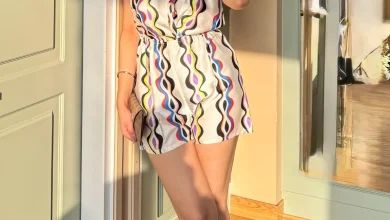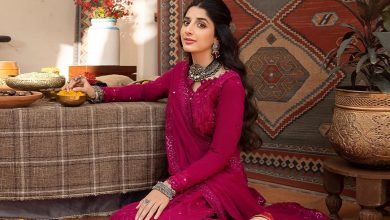Maximizing Light on Your Houston Wedding Day: A Photographer’s Guide

Your wedding day is one of the most important moments of your life, and lighting plays a starring role in how beautifully it will be captured. As a Houston wedding photographer, I’ve seen firsthand how good light can elevate every photo—making skin glow, emotions pop, and details shine. This guide will help you plan intentionally for great lighting, ensuring your wedding day images are top-rated, unforgettable, and full of impact.
1. Understand Why Light Matters in Wedding Photography
Natural, thoughtful lighting shapes how your day feels. Harsh midday sun can cast unflattering shadows or cause squinting, whereas soft golden-hour light flatters skin tones and creates dreamy backdrops. Indoor lighting that’s too dim might blur details or distort colors, while fluorescent lighting can introduce cold, unappealing hues.
From a photography standpoint, good lighting is industry-leading and results-driven. It gives your images depth, clarity, and warmth—all essential for photos that become timeless treasures.
2. Schedule with Lighting in Mind
a) Embrace the Magic of Golden Hour
Golden hour is the 60–90 minutes after sunrise or before sunset. The soft, warm tones at this time are naturally affordable yet high-impact, making portraits glow. Many Houston venues offer scenic spots perfect for evening light—think gardens, water views, or skyline backdrops.
To capture golden-hour magic, aim to schedule:
-
Portraits 60–90 minutes before sunset
-
Sunset ceremony exits against the glowing sky
-
Outdoor couple sessions during this dreamy timeframe
b) Avoid Harsh Midday Sun
When the sun is high (usually late morning to early afternoon), it can create unflattering shadows on faces. If your wedding ceremony or portraits are in the middle of the day:
-
Choose shaded spots like tree lines or pergolas
-
Use diffusers or natural shade to soften light
-
Opt for an indoor first look or portraits to control environment
A reliable photographer will plan around this and guide you toward shaded options or better times.
3. Connect Your Photographer with Your Venue Early
Once your venue is booked, invite your photographer to a walkthrough. We’ll assess:
-
Natural light flow at different times
-
Best windows or doors for portraits
-
Ceremony sites with flattering illumination
-
Areas suited for cocktail hour where natural light lingers
This ensures a proven game plan and that the photographer’s vision aligns with how your venue can deliver amazing lighting.
4. Choose Locations and Times That Complement Your Vision
Outdoor Versus Indoor
Outdoor photos rely on natural lighting—great during golden hour, but riskier midday. Indoor ceremonies can benefit from professional lighting setups. You can enhance indoor spaces by:
-
Adding soft LED uplights in warm tones
-
Using spotlights to highlight key areas like the alter or head table
Lighting brands now offer innovative and user-friendly solutions that are easy to set up and enhance the atmosphere. Speak with your florist or venue coordinator about lighting options.
Details, Décor, and Reception Areas
Good light makes your décor shine. Ask vendors if they can:
-
Spotlight centerpieces or signage
-
Use candles or warm market lights to create a cozy glow
-
Incorporate string lights for ambiance and photo-worthy backdrops
Well-placed lights make your details pop and get captured beautifully in candid shots.
5. Discuss Supplemental Lighting with Your Photographer
Professional photographers often bring portable gear like:
-
On-camera flash with diffuser for soft illumination
-
Off-camera strobes to replace harsh ambient light
-
LED panels to brighten dark spaces without overpowering the natural mood
These tools are part of a trusted, high-performance kit to capture exceptional images, even in low-light environments.
6. Build in Time for Light-Focused Photo Sessions
Light changes throughout the day, so plan your timeline with that in mind:
-
First Look or Bridal Portraits: Schedule in the late afternoon
-
Couple’s Shoot: Reserve golden hour for romantic outdoor shots
-
Family Photos: Plan them mid-afternoon in shaded spots
-
Reception Introductions and First Dances: Use uplights or sparklers to highlight the moment
A well-structured timeline ensures every photo happens with lighting that’s best for the mood and setting.
7. Trust Your Photographer’s Creative Judgment
An experienced Houston wedding photographer knows how to work with light. Whether it’s:
-
Positioning you near an open window
-
Framing you against backlighting for a halo effect
-
Adjusting camera settings to balance warm tones
Trusting their expertise is essential—they’ve seen how light behaves across Houston’s venues and seasons and have the reliable, quality-driven eye to capture your best moments.
8. Prepare for Weather Variables
Weather can change your lighting scheme quickly. Here’s how to plan:
-
Cloudy days provide soft, even light—ideal for portraits
-
Clear skies offer warm sunset light
-
Overcast skies keep color tones cool, but trigger more indoor lighting needs
Your photographer carries backup lighting equipment and has planned venue contingency options for capturing great images, rain or shine.
9. Simple Lighting Tips for Couples
Here are practical steps you can take:
-
Keep sunglasses handy to reduce squinting in bright sun
-
Bring a neutral-color reflector or ask your photographer to use one to fill shadows
-
Consider extra makeup with matte finishes to reduce shine in high-light shots
These little steps can make a big visual difference, especially under tricky lighting.
10. Communicate Clearly with Your Team
To make sure light is leveraged beautifully:
-
Share your photography goals with your planner, florist, DJ, and lighting designer
-
Pass along ceremony and portrait time windows to your vendors
-
Confirm with your photographer where they plan to shoot and what equipment they’ll use
Clear communication ensures everyone works together to create the perfect atmosphere and lighting setup.
Summary: The Blueprint for Beautiful Light
-
Time it right – plan around golden hour and avoid harsh midday light
-
Scout early – walk through your venue with your photographer
-
Add strategic lighting – uplights, LEDs, and candles enhance mood and photos
-
Pack smart gear – trust your photographer’s lights and flashes
-
Align timelines – schedule shoots around the best natural light windows
-
Stay adaptable – be ready for changing weather with contingency lighting plans
-
Communicate early – ensure everyone understands the plan
Lighting might seem technical, but it’s really about setting the tone for your wedding day. At B&A Photography, we believe that great light isn’t just about how things look—it’s about how they feel. This thoughtful approach ensures your pictures not only appear beautiful—they radiate real emotion and cinematic romance, preserving every meaningful moment with clarity and warmth.



